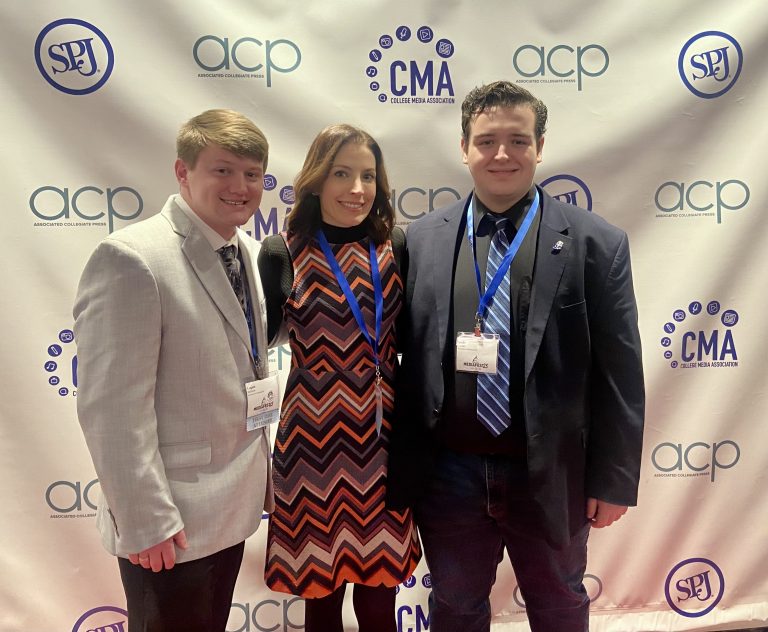

Pro – Luke Cooper | Online Editor
Ever since Investigation Discovery launched in 2008, it has been a staple in my household. Whenever news is not on the living room TV, the ID channel is.
True crime interest in the United States has seen a resurgence in the past 10 years or so, according to Google Trends. From 2015 to 2022, the genre steadily gained interest, but it has leveled off in more recent times.
There are three main reasons why true crime is popular, according to the School of Journalism and Communication at the University of Oregon: Viewers enjoy mysteries as people have always been drawn to them, there is a slight feeling of participation in solving the featured crime and it makes people feel more prepared if a violent crime happens to them.
True crime programs allow people to become more educated in the comfort of wherever they might watch or listen to said programs. Not only do consumers learn the victims’ stories, they also gain some insights into surviving a potentially dangerous situation.
Research done by Stella Bruzzi, executive dean of the faculty of arts and humanities and professor of film at University College London, suggests the genre has shed light on cases and has been a reason for the reopening of investigations. She cited Sarah Koenig’s “Serial” as an example with the Adnan Syed case being reopened after it was mentioned on the podcast. In 2022, Syed’s conviction for the murder of Hae Min Lee was overturned, but he was resentenced on March 14, according to CBS News.
An article by Mashable brings up the ethical concerns of true crime, featuring victim and advocate Patricia Wenskunas. She mentions what happened to her is not a “story,” but rather her life. There is no arguing with that, but living in the United States sometimes has its unfortunate consequences. All court cases are public, and government documents are not copyrighted, meaning they can be used for anything. In the case of true crime, it is more episodes pertaining to the cases.
Sometimes victims and or their families do not like the attention given to the cases, which is fair, but currently there is no regulation for going through court documents and a little internet investigating for an episode, nor should there be. If there is some type of victim fund, donating a majority of the proceeds from an episode to that should be encouraged but not forced. It is a moral thing to do. Although, not everyone will do the moral thing — obviously.
The true crime genre does more good than harm because it sheds light on the cases long after they would have faded into irrelevance otherwise. The genre has the power to activate the fourth estate and expose more people to more knowledge, and it also has the power to potentially reopen cases and get closer to the real justice that originally should have been awarded.

Con – Ella Harner | Staff Writer
It is no secret true crime is a popular, widely-loved form of media. From podcasts to movies, the true crime genre is not only entertainment, but a new form of influence.
While true crime is entertaining, the problem still stands: True crime encourages desensitization and idolization of real-life criminals.
“Monsters: The Lyle and Erik Menendez Story” which was released last year, according to IMDb, is one of those cases. “Monsters” follows the story of the Menendez brothers and their parents’ murder. With the release of this docuseries, people have even begun dressing up as the brothers, inspired by both the real-life and fictional outfits from the show, according to KTLA. While taking inspiration from the Menendez brothers is not necessarily wrong when it comes to their fashion choices, it does desensitize viewers from the brothers’ crimes.
While the intention of true crime should be for exposure, justice and education, it seems the true intentions are solely for entertainment. And, what is more entertaining than watching someone get murdered all while having the guy who plays the murderer being the most conventionally attractive person you have ever seen? This combination adds to the desensitization of murder and takes attention away from the crime itself. It makes people forget the crime actually happened and involves real people. True crime fans make edits of criminals on TikTok, dress up as them for Halloween and some even idolize them.
Not only have fans of the Menendez brothers sprung up due to their fashion sense, but fans have formed due to their actual crimes. A 15-year-old from Wisconsin, who was charged with first-degree homicide, said he was inspired by a scene on a Netflix documentary of the Menendez brothers to stab his mother to death, according to USA Today.
The idolization of murderers is alarming no matter the cause of their actions. “Who is Luigi Mangione?” is a TV special released in February on Prime Video, according to IMDb, and it brought even more hype to the alleged killer of United Healthcare CEO Brian Thompson. Under #luigimangione on TikTok, there are countless edits romanticising his alleged actions as well as his looks.
Due to people enamored by his physical appearance, it is hard to say whether or not they actually agree with Mangione’s alleged crimes. People become invested with him and his looks, and that gives them the opening to fall into the idea that what he did was right rather than recognizing what he did was a crime.
True crime opens up a whole new avenue for people to find a new idol, and because the actors who play the criminals in the documentaries that are released are often conventionally attractive, it triggers people to idolize their actions or ignore them all together.





